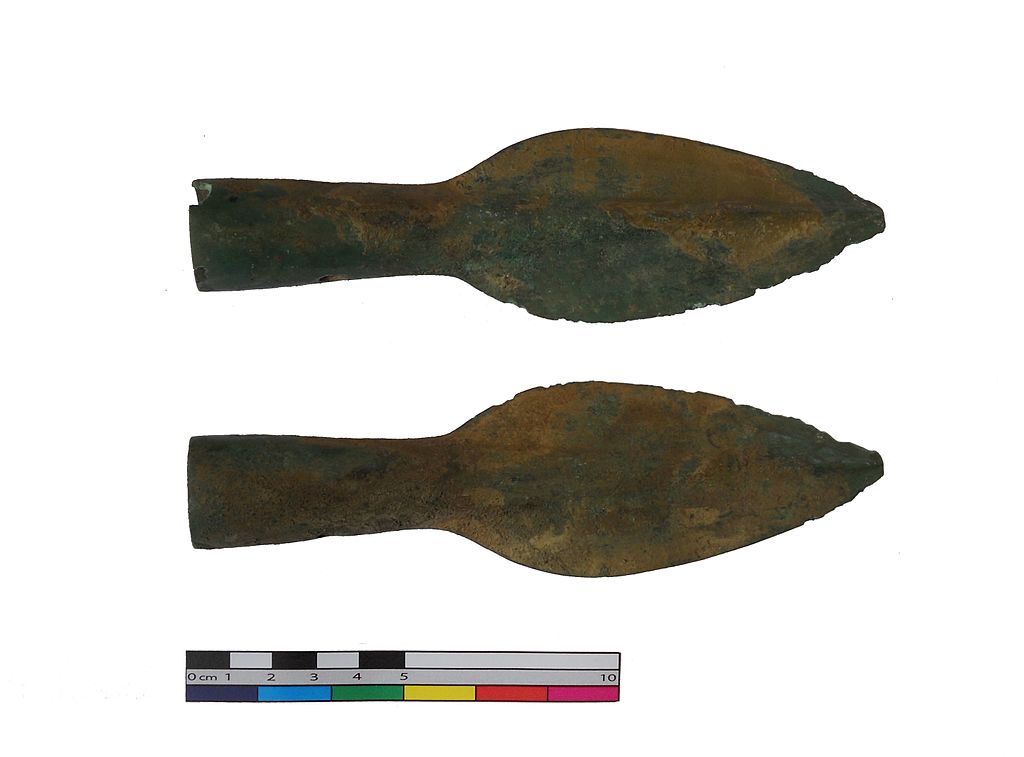<![CDATA[Archaeologists digging in the northeast of Scotland have made “the find of a lifetime” – a 3,000-year-old spearhead made from bronze and embellished with gold. According to The Scotsman newspaper, the impressive find was made in Angus at an excavation in Carnoustie prior to the construction of a pair of football pitches. GUARD Archaeology’s Alan Hunter Blair told the paper that the discovery of the spearhead was doubly important because of how rare such items are – only a “handful” have been discovered across the UK and Ireland, the archaeologist added. The organization undertook the excavations on behalf of Angus Council. The weapon, which was part of a larger artifact hoard uncovered on the site, provides clues to the warrior-centric society that existed in the northeast, said Mr. Hunter Blair. Uncovering such a 3,000-year-old artifact is a quite rare occurrence, he remarked, but in the context of the items it was found with – other bronze objects such as the fittings for a scabbard, a pin, and a sword – the gilded spearhead takes on special significance. Very early Celtic myth often focused on the quality of the weapons wielded by the heroes in these tales, taking special note to draw attention to how brilliant and reflective they were, Mr. Hunter Blair said. The spearhead was likely gilded to both increase its value and rarity and also to heighten its aesthetics, making it one of just a few such spearheads discovered throughout the British Isles. One such weapon hoard, famously discovered near Dundee in 1963, is a strong indication that the Bronze Age warrior society in the region was a wealthy one. With the new site just a few miles from the 1963 find, these discoveries help cement the idea that the ancient society reached its primacy from around 1000 BCE through 800 BCE. Other noteworthy discoveries from the archaeological site include the survival of organic remains, which in itself is incredibly rare for such aged artifacts. Accompanying the spearhead was a scabbard, constructed from leather and wood, that has already been drawing accolades for possibly being the best preserved scabbard of its time dating from the Late Bronze Age. Meanwhile, the scabbard and pin were found wrapped in a remarkably preserved textile. Mr. Hunter Blair stressed how rare such discoveries are, especially on dry land without the preservative nature of wetter, bog-like environments. Excavation work is set to continue on site, with many expressing true enthusiasm for a chance to examine what may very well be the ruins of the largest Neolithic hall ever discovered within Scotland. The remains have been dated to approximately 6,000 years old, much to the excitement of the archaeological community. Jeanette Gaul, the vice convener for Angus Council, said that it was a massive surprise to find such an important find while preparing to create sports facilities for Carnoustie. There had already been indications that the site held archaeological significance, as a 2004 excavation found widespread evidence of the area being used during the medieval and prehistoric periods. This raised the specter of even more archaeological finds beneath the site for the proposed construction. ]]>
Scottish Archaeologists Find 3,000-Year-Old Spearhead
